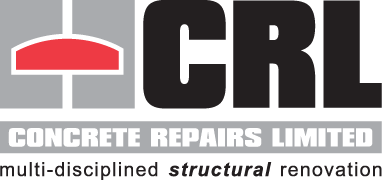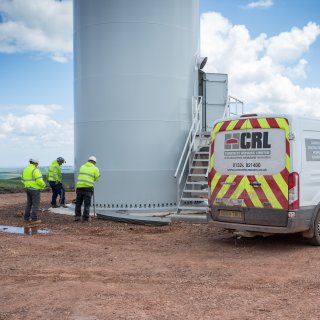Creating stability by filling cracks & voids
Injection
Injection grouting of cracks in concrete under controlled pressures is the method used in conrete repair to restore structural integrity, stop water leaks, or merely to seal the crack. Depending on the size of the crack, and the end result required, various types of materials are utilised. The resins and grouts generally used include rigid, flexible, semi-flexible, water activated, temperature adjustable and low viscosity polyurethanes along with ultra-low viscosity water- based acrylic, colloidal silica and sodium silicate-based system.
Before selecting the materials to use it is important to know if the crack is static or live. If the crack continues to move due to thermal or load conditions then a flexible material will be required in order to maintain the seal. Static cracks can be bonded and sealed through resin injection by injecting with a rigid material such as expoxy resin.
At CRL we are approved applicators for a range of high quality resin injection materials suitable for all eventualities so we are able to select the most suitable products for the specific circumstances. In water sealant situations these are often water reactive (hydrophobic polyurethane) which penetrate into the cracks, react with the free water and set, thus stopping further water ingress. Crack injection can de carried out using hand pumps, or specialist high pressure pumps.
Crack injection is more of an art than a sceince, but the chances of the process working can be improved by selecting the correct materials, using the correct plant and ensuring the operatives carrying out the works are trained in their use.
Grouting
Cementitious grout is a composite material generally consisting of water, cement, and sand. It is typically used for filling voids under machines or other structural elements. It can be mixed on site, or purchased as a propritary pre-bagged material.
Grouts are often used to fill voids under bridge bearings, underneath and around the base of wind turbines and underneath machine bases. It can also be used for sealing joints and openings in surfaces and reinforcing existing structures. These flowable cementitious grouts require specialist plant to mix and pump the materials. CRL have our own plant for most applications, both stationary and trailer mounted. Our personnel are competent in the grouting of voids using gas vents to ensure that no air is trapped which would create cavaties in the finished work.
CRL are skilled in all types of grouting to concrete structures and underneath base plates using cementitious materials. With CRL you can be confident that we have access to the best plant, materials and personnel to deliver a successful project using our own skilled tradesmen and plant.
Related Projects

“Just wanted to drop a quick note to say how impressed I was with the guys we had on site. Great PPE, great attitude to wearing the proper PPE for the task in hand, very well self-contained areas, kept clean, tidy and all-round very efficient with what they do. A clean tidy area is such an easy way of providing a great perception of the work contractors do and your operatives managed this very well.”
Paddy Murray | Project Manager | Farrans (BAE - Grouting of Pivot Brackets)









